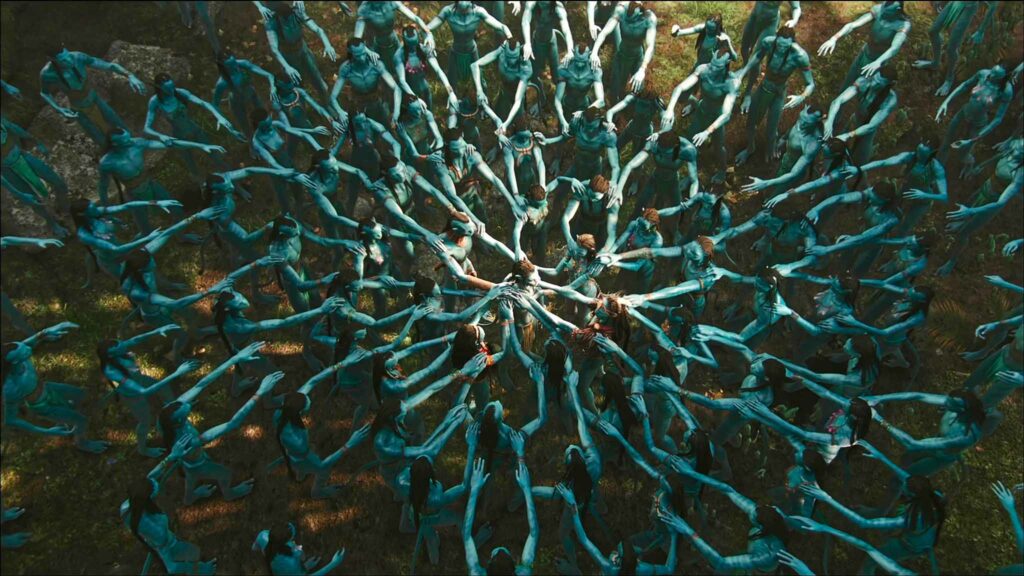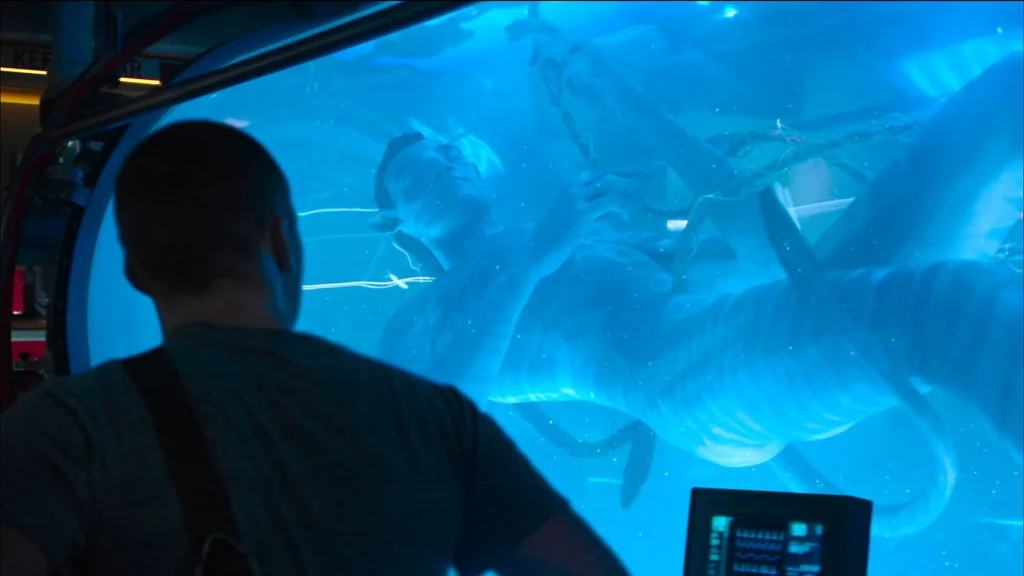When James Cameron’s Avatar (2009) hit the screens, it was hailed for its stunning visuals and immersive world-building. But beyond the blue-skinned aliens and bioluminescent forests lies a much deeper exploration of human psychology, social power, and moral conflict. At the heart of this story is an age-old tension — the tension between two kinds of conformity.
In Avatar, the Na’vi and the human colonizers both conform to their cultures. But the type of conformity — and what it serves — draws the line between protagonist and antagonist.
Let’s explore how this subtle yet powerful distinction shapes the entire moral landscape of the film.
The Na’vi: Conforming to Meaning and Connection

The Na’vi are not rebels. They don’t reject their traditions, question their elders, or challenge their way of life. In fact, they are highly conformist in many ways: they wear similar clothes, follow sacred rituals, and live according to ancient laws.
But their conformity isn’t about obedience. It’s about belonging.
Their way of life is rooted in harmony with nature and guided by a spiritual connection to Eywa, the planet’s life force. They conform to a living system — not a bureaucratic one. Their collective behavior protects the land, honors ancestors, and reinforces community. In this sense, their conformity is organic — a reflection of shared values rather than imposed rules.
It’s a form of unity that fosters meaning, identity, and interdependence.
The Humans: Conforming to Power and Profit

By contrast, the human colonizers — especially the soldiers and corporate figures — operate under a different model: top-down conformity.
They wear uniforms. They speak in military jargon. They follow orders. Their sense of identity is stripped down to rank, role, and utility. It’s a conformity born of hierarchy, where questioning the mission is a weakness, and individuality is a liability.
Their conformity is driven by profit, efficiency, and control. It serves a system — not a community. And when people become cogs in a machine, moral responsibility disappears. That’s how they justify displacing an entire indigenous population to mine “unobtanium”: because the system demands it, and they conform to the system.
This is the kind of conformity that leads to dehumanization, both of self and others.
The Core Difference: What Are You Conforming To?

The Na’vi conform to tradition and spiritual truth.
The humans conform to authority and economic gain.
This difference in allegiance creates the central moral divide in Avatar. One group preserves life. The other extracts from it. One aligns with meaning. The other obeys power.
Conformity, then, is not inherently good or bad. It depends on the source of the conformity — and the outcome it produces.
Here’s a breakdown of the contrast:
| Na’vi | Humans | |
|---|---|---|
| Form of Conformity | Tradition, ritual, spiritual unity | Hierarchy, chain of command |
| Purpose | Harmony, identity, preservation | Efficiency, profit, obedience |
| Emotional Tone | Belonging, reverence, care | Detachment, control, numbness |
| Result | Resilience, resistance, life | Destruction, exploitation, dehumanization |
Jake Sully: The Conformity Breaker

Jake Sully is the bridge between these two worlds. At first, he’s a loyal soldier — a cog in the military machine. But as he integrates with the Na’vi, he begins to question the system he once served.
His transformation is not just physical or cultural — it’s existential. He shifts from conforming to orders to aligning with values. From serving profit to serving life. From obedience to purpose.
Jake’s journey is a powerful reminder that the real hero is often the one who learns to break free from conformity to power, and instead, conform to something meaningful.
A Reversal of the Classic Colonial Narrative

Traditionally, colonial stories in film and literature painted the colonizers as bringers of civilization. Avatar flips that narrative. The invaders are the villains; the indigenous are the moral center. The film challenges the myth of progress and questions what “civilized” truly means.
Cameron’s message is bold: the real advancement lies not in technology, but in humility, harmony, and spiritual depth.
By asking the audience to root for the Na’vi, Avatar invites us to reflect on our own systems — and whether we conform to them out of fear or truth.
Everyday Conformity: The Same Conflict in Our Lives

The tension we see in Avatar isn’t limited to sci-fi. It plays out in our daily lives.
We face choices all the time:
Do we act to preserve status, image, and approval?
Or do we act to serve love, integrity, and inner truth?
Consider these two paths:
Conforming to Power
- Following career paths for prestige, not passion
- Staying silent in unjust situations to avoid conflict
- Performing online to appear “normal” or successful
- Suppressing feelings to maintain an image
Conforming to Meaning
- Choosing simplicity over consumerism
- Speaking truth even when it’s uncomfortable
- Creating without worrying about external validation
- Taking risks to live an authentic life
The same forces shaping protagonists and antagonists on screen shape us off screen. And like Jake Sully, we too can wake up — and choose differently.
A deeper analysis

1. Conforming to power keeps you safe
It offers security, social approval, structure, and often success — but at a cost:
- You may lose authenticity
- You may silence parts of yourself
- You may serve systems that go against your values
2. Conforming to meaning makes you feel alive
It brings purpose, inner peace, connection, and creative fire — but it’s risky:
- You might be misunderstood
- You might lose status or stability
- You might feel alone in a world built around power
The Destruction of the Na’vi Tree and Eywa

When the humans destroy the tree in Avatar, it goes beyond cutting down a simple plant — it represents a direct assault on the Na’vi’s traditions, spirituality, and entire way of life.
This tree embodies the heart of their culture and their deep bond with Eywa, the living spirit of their world. By targeting the tree, the humans are effectively:
- Attempting to wipe out the Na’vi’s cultural identity and heritage
- Breaking the spiritual connection that unites their community
- Enforcing a system that prioritizes exploitation over respect and harmony
In essence, the attempted destruction of Eywa and the Na’vi’s sacred sites stands as a powerful symbol of the violent imposition of a profit-driven system that eradicates local meaning and connection — a pointed critique of colonial and capitalist methods.
An important distinction

1. Conformity to Validate Insecurities and Assert Power
This is ego-based conformity. It may appear polite or harmonious on the surface, but it’s rooted in fear, pride, or competition.
Motive:
- To appear superior or in control.
- To protect fragile self-worth by gaining the approval, admiration, or submission of others.
- To avoid being challenged, by pressuring others to play a role.
Examples:
- Forcing a guest to stay longer to prove you’re a good host.
- Insisting others play your game so you can dominate.
- Showing off accomplishments not to share joy, but to win validation.
- Making people conform just to avoid feeling small.
Impact:
- Drains the other person.
- Creates fake harmony, tension, or resentment.
- The relationship becomes one-sided and manipulative, even if unconsciously.
This is conformity as a power move. It preserves image, not truth.
2. Conformity to Give Dignity

This is empathy-based conformity. It’s not about erasing yourself, but about choosing kindness over ego to preserve connection.
Motive:
- To honor the dignity of another.
- To show respect, especially to the vulnerable (elders, guests, hosts).
- To protect harmony, not as a lie, but as a shared human grace.
Examples:
- Letting someone speak about their life because they need to be heard.
- Eating a simple meal out of respect, even if it’s not your taste.
- Adjusting your tone or words to prevent unnecessary hurt.
- Being patient with someone trying to impress you, without mocking them.
Impact:
- Builds mutual trust and safe space.
- Feels human, not oppressive.
- Doesn’t require you to betray yourself — you choose to bend momentarily for the sake of love or peace.
This is conformity as compassion, not submission.
Summary Table:
| Power-Based Conformity | Dignity-Based Conformity | |
|---|---|---|
| Motive | Insecurity, ego, status | Respect, compassion, peace |
| Goal | Dominate, validate self | Uplift others, connect |
| Feeling Created | Draining, resentful | Graceful, human |
| Freedom | Imposed | Chosen |
| Lasting Effect | Superficial bond, tension | Trust, subtle but strong bond |
The key difference is intent.
Are you pressuring others to play your game?
Or are you choosing to step into theirs — out of care, not fear?
You can feel the difference in your body. One makes you shrink. The other expands your heart.
Final Reflection

At the heart of Avatar lies a profound insight:
The real battle isn’t just good versus evil. It’s conformity to power versus conformity to purpose.
The antagonist obeys without reflection. The protagonist questions, transforms, and ultimately chooses meaning over comfort.
This distinction transcends genre. It defines countless great stories — and many of our real-life decisions.


GIPHY App Key not set. Please check settings